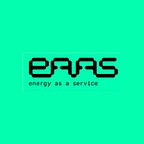Carbon Markets — Understanding their Types and Impact
Introduction
Carbon Markets are one of the most popular tools used to fight negative climate change. We are mainly talking about the fight against the accumulation of greenhouse gases in the atmosphere. It has long been known that too high concentrations of carbon dioxide (CO2) in the environment increase the risk of global warming, increase air pollution, and acidify the seas and oceans, which negatively affects biodiversity. To prevent this and limit the release of CO2 emissions into the atmosphere, an emissions market was created. The basic idea of emission allowance markets is to create a financial mechanism encouraging entities to effectively and cost-effectively reduce greenhouse gas emissions.
At EAAS a company whose main goal is to pursue sustainable development and engage B2B and B2C markets — in this article, we will elaborate on the topic of Carbon Markets. We believe that projects related to reducing CO2 emissions, projects related to carbon capture, and carbon utilization are indispensable elements of the pursuit of sustainable development. This tool is necessary to achieve CO2 neutrality by 2050.
What exactly are carbon markets and how do they work?
Carbon Markets are a type of financial market where you can sell and buy carbon credits. What is a carbon credit? This is a kind of permit that allows the buyer to emit a certain amount of carbon dioxide or other greenhouse gases.
The aim of this type of financial market is to prevent the release of too much greenhouse gases into the atmosphere. This is supervised by governments or groups of governments that limit gas emissions to a certain ceiling and assign limits to entities. These ceilings are typically based on scientific assessments of what is necessary to achieve established environmental goals. As we mentioned at the beginning of the article, one such goal is to limit global warming to less than 2 degrees Celsius above pre-industrial levels set in international agreements such as the Paris Agreement. Each company included in this system must have an allocation for each tonne of CO2 it emits. Moreover, they can be freely traded. Thanks to this, program participants can buy additional allowances or sell surplus allowances if their emissions have decreased. This provides a uniform price on carbon emissions, which has a significant impact on the market. The price depends mainly on the expenses related to the implementation of reduction measures and the goals adopted when setting the ceiling of the emission allowance trading system. Because the carbon market is so flexible, issuers can choose the best way to reduce emissions. Entities with high emission reduction costs may decide to purchase additional allowances instead of investing in emission reduction funds; on the other hand, entities with lower costs may decide to reduce emissions and sell surplus allowances, thereby generating revenues. As a result of this flexibility, innovative and cost-effective methods of reducing emissions are emerging in various economic sectors. By allowing entities in different jurisdictions to trade emissions allowances, carbon markets also promote international cooperation, making it easier to shift emissions reduction efforts to where they can be achieved most effectively. This can help address leakage and competition issues if shifting production causes emissions to fall in one jurisdiction and emissions to rise in another.
According to our experts at EAAS, Carbon Markets are growing at an astonishing pace, doubling their value on a yearly basis.
Types of carbon markets
We can distinguish 2 basic types of carbon markets:
- Global Compliance Markets
- Voluntary Markets
Global Compliance Markets (GCM) — this type of market is used by companies and governments that must legally account for greenhouse gas emissions. The main purpose of the compliance market is to put a price on carbon emissions by introducing laws or regulations governing the supply of allowances. These powers are then distributed between national, regional, and global systems. This could be achieved through a carbon tax or a cap-and-trade program that changes economic incentives, causing the costs of pollution to increase.
Voluntary Markets (VCM) — based on private, voluntary initiatives and not controlled by the government. However, governments can use VCM to increase emissions reductions and direct funds to the sectors most needed. There is no regulation in a voluntary market, which is the main difference between GCM and VCM. This is done by trading and purchasing Verified Emissions Reductions (VERs) on VCM, financially supporting climate projects. This form of voluntary carbon offsetting is based on the United Nations Convention on Climate Change (UNFCCC).
Through carbon credits, companies and individuals are encouraged to reduce greenhouse gas emissions. Organizations are incentivized to invest in cleaner technologies, renewable energy sources, and energy efficiency measures to reduce their carbon footprint because carbon emissions give them a monetary value. In order to build a sustainable future together and improve the quality of our environment, it is important to stay up to date with information and news in this area! As a company focused on the sustainable development of business and individual clients, we believe that carbon credits play an important role in increasing public awareness and participation in improving quality and getting closer to the CO2-neutrality goal by 2050. Transitioning to a climate-neutral society is an opportunity to build a better future for all, leaving no one behind. That’s why we encourage everyone to engage and expand their knowledge in this area. Stay up to date and follow our publications!
Sources:
https://www.carbon-mechanisms.de/en/introduction/carbon-market-basics
https://www.investopedia.com/carbon-markets-7972128
https://climatefocus.com/so-what-voluntary-carbon-market-exactly/
https://www.bcg.com/publications/2023/why-the-voluntary-carbon-market-is-thriving
